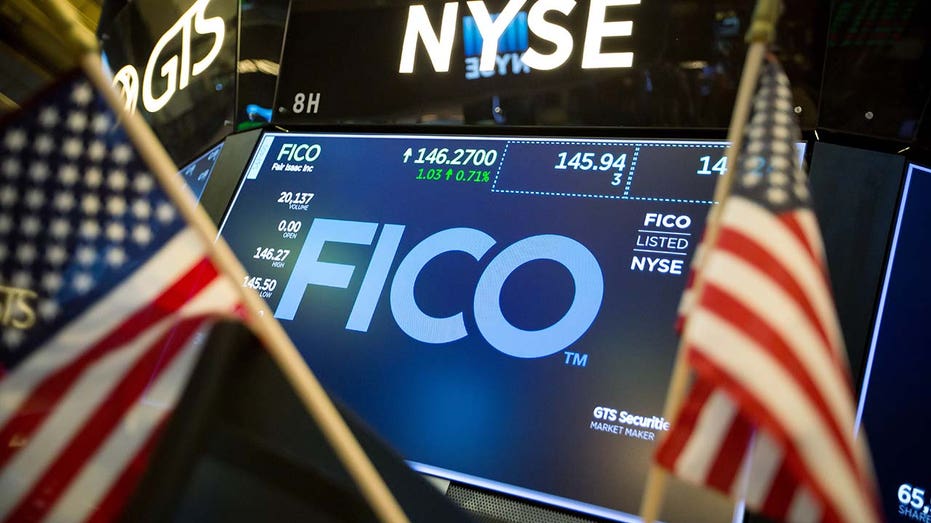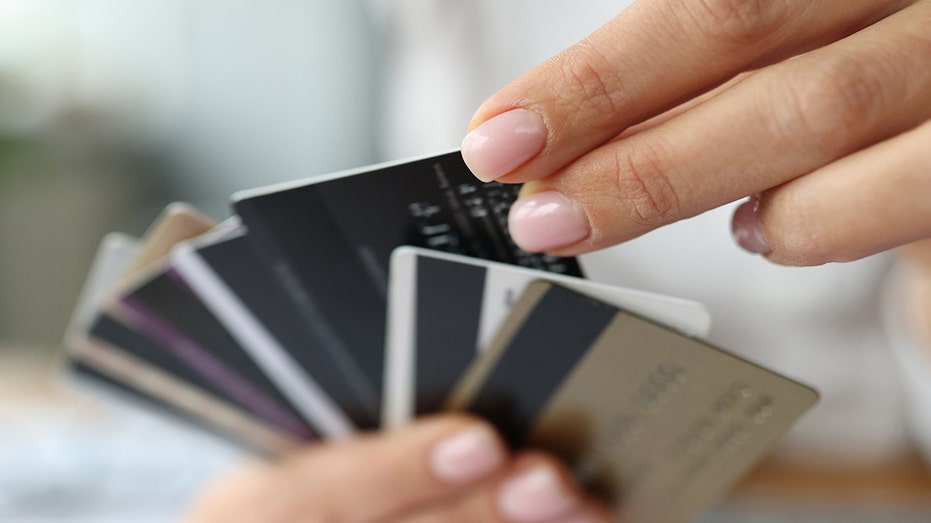Biden, Wartime Aid, Two-Year Treasury Yield
Interest rates are continuing to climb just as the holiday shopping season is approaching, making it more costly for shoppers who plan to charge using store cards.
The average retail credit card annual percentage rate (APR) hit a new record high of 28.93% this year, up from 26.72% in 2022 and 24.35% in 2021, according to Bankrate’s annual Retail Cards Study out Monday.
Retail Charge Cards
- 28.93% APR is well above the national average, which clocks in at 20.71%
- The highest retail credit card APR is 33.24% on the Academy Sports + Outdoors Credit Card, the Burlington Credit Card, the Good Sam Rewards Credit Card and the Michaels Credit Card
- 16 retail credit cards charge 32.24% to all cardholders who carry balances, including those from Jared, Kay Jewelers, Zales, owned by Signet Jewelers, QVC, Walgreens, Ross, Victoria’s Secret, T.J. Maxx and Wayfair
AMERICANS NET WORTH POST-PANDEMIC
| Ticker | Security | Last | Change | Change % |
|---|---|---|---|---|
| SIG | SIGNET JEWELERS LTD. | 71.72 | -2.01 | -2.73% |
| WBA | WALGREENS BOOTS ALLIANCE INC. | 21.26 | +0.30 | +1.43% |
| ROST | ROSS STORES INC. | 115.66 | -0.60 | -0.52% |
| VSCO | VICTORIA’S SECRET & CO. | 19.34 | -0.12 | -0.59% |
| TJX | THE TJX COS. INC. | 89.10 | -0.73 | -0.81% |
| W | WAYFAIR INC. | 43.87 | +0.11 | +0.25% |
Should people think twice about opening a store-only credit card?
Many retailers offer point programs and member perks if you use a store credit card but if you can’t pay it off in full it’ll cost you.
The average store-only credit card charges 30.24%, noted Ted Rossman, senior industry analyst with Bankrate.com. These figures are well above the national average for all credit cards, he says, which clocks in at 20.71%.
Opening a store card and not using it won’t cost you but will likely factor into your FICO score.

A monitor displays Fair Isaac Inc. (FICO) signage on the floor of the New York Stock Exchange (NYSE). (Michael Nagle/Bloomberg via / Getty Images)
When could a store-only credit card be a good choice?
If you ever carry a balance, a retail credit card probably isn’t the best choice for you, given the exceptionally high interest rates that most of these cards charge, Rossman says. “If you can pay in full and avoid interest, a retail credit card could make sense if you’re loyal to the store,” Rossman told FOX Business.
| Ticker | Security | Last | Change | Change % |
|---|---|---|---|---|
| AMZN | AMAZON.COM INC. | 125.17 | -3.23 | -2.52% |
| TGT | TARGET CORP. | 108.83 | +0.47 | +0.43% |
| BBY | BEST BUY CO. INC. | 68.68 | -0.82 | -1.18% |
For example, Rossman says, Amazon, Target, Best Buy and others give 5% cash back when you use their credit card at their store. “That can add up for a loyal shopper, and it’s likely more than they would earn on a general-purpose card,” he adds.

Shopping carts are lined up inside a Target store on Aug. 16, 2023 in Chicago. (Scott Olson / Getty Images)
According to Rossman, another useful instance could be to get a sizable discount on your first purchase. “That’s a common sign-up bonus among store cards,” he says. “I have a coworker who saved 10% off new appliances by following that approach.”
Experts caution you to think about your decision to open a store card, and only do so if you plan to pay off the balance in full and on time. “Don’t make a bad decision in the heat of the moment that sets you up for 30%-plus interest rates,” Rossman warns.
RETAILERS HIRING FOR THE HOLIDAYS
Why are Americans drowning in credit card debt?
As the Federal Reserve raises interest rates to combat inflation the combo has amounted to higher borrowing costs for many Americans. The yield on the benchmark 10-year Treasury is nearing 5%, meaning costs for things such as mortgages are rising.
Rossman explains that people tend to get into credit card debt for very practical reasons – either an emergency expense, some sort of unexpected medical bill, home repair or car repair, or simply day-to-day expenses outpacing their paychecks. “The latter has been especially common the past couple years due to high inflation,” Rossman tells FOX Business. “Lots of people are using credit cards to finance daily essentials such as groceries and gas. Unfortunately, credit card debt is easy to get into and hard to get out of.”

“Credit card debt is easy to get into and hard to get out of,” one expert warns. (iStock / iStock)
Overall, the average credit card balance is $5,947, according to TransUnion. At the average interest rate, 20.72%, according to Bankrate, someone making minimum payments would be in debt for 212 months and would owe $8,819 in interest. “The monthly payments would start at $162 and decline along with the balance,” Rossman explains. “This illustrates the dangers of making only minimum payments. Pay it all if you can.”
| Ticker | Security | Last | Change | Change % |
|---|---|---|---|---|
| MA | MASTERCARD INC. | 384.41 | -3.46 | -0.89% |
| V | VISA INC. | 233.38 | -0.43 | -0.18% |
| DFS | DISCOVER FINANCIAL SERVICES | 82.19 | -2.40 | -2.84% |
With regard to retail credit cards, even though they tend to have lower limits, there is still concern, he says. “Even a $1,000 purchase with minimum payments at 30% would keep someone in debt for 51 months and cost $776 in interest,” Rossman illustrates.
What can you do if you can’t make your payments?
If you find yourself in a situation where you are struggling to pay your credit card payments, you have options. Consider the following:
- Prioritize your spending. Corina Cavazos, business growth strategy director for Wells Fargo, who is based in Dallas, Texas, recommends creating a list of all your monthly expenses in two categories: Needs and Wants. Your “needs” are the absolute must-haves to survive. “For example: food, shelter, transportation, electricity and insurance,” Cavazos told FOX Business. “Wants” are the items that are still important to you, but you could live without, including monthly subscriptions, memberships, entertainment and travel, she says.
- Calculate your take home pay. “Deduct the total cost of your ‘needs’ from this number. The difference will show you the amount that provides the opportunity you have to redirect that money to your credit card payments,” she says. “You’ll likely be surprised at how canceling a few subscriptions can free up funds to be used to pay down credit card debt.”
- Cut up credit cards. If your credit cards are reaching their limit or even if there is some available credit, and you’re putting a plan together to pay them down, Cavazos says by destroying your credit cards you eliminate the temptation to use any existing credit on an impulsive buy as you’re paying down your balances. It’s always advisable, however, to keep one credit card for emergencies like a car repair, a job loss, or a medical emergency, experts say.
- Use credit counseling. There are resources to assist you if you’re trying to get a handle on debt. Work with a reputable nonprofit credit counseling agency such as Money Management International, advises Rossman with Bankrate.com



